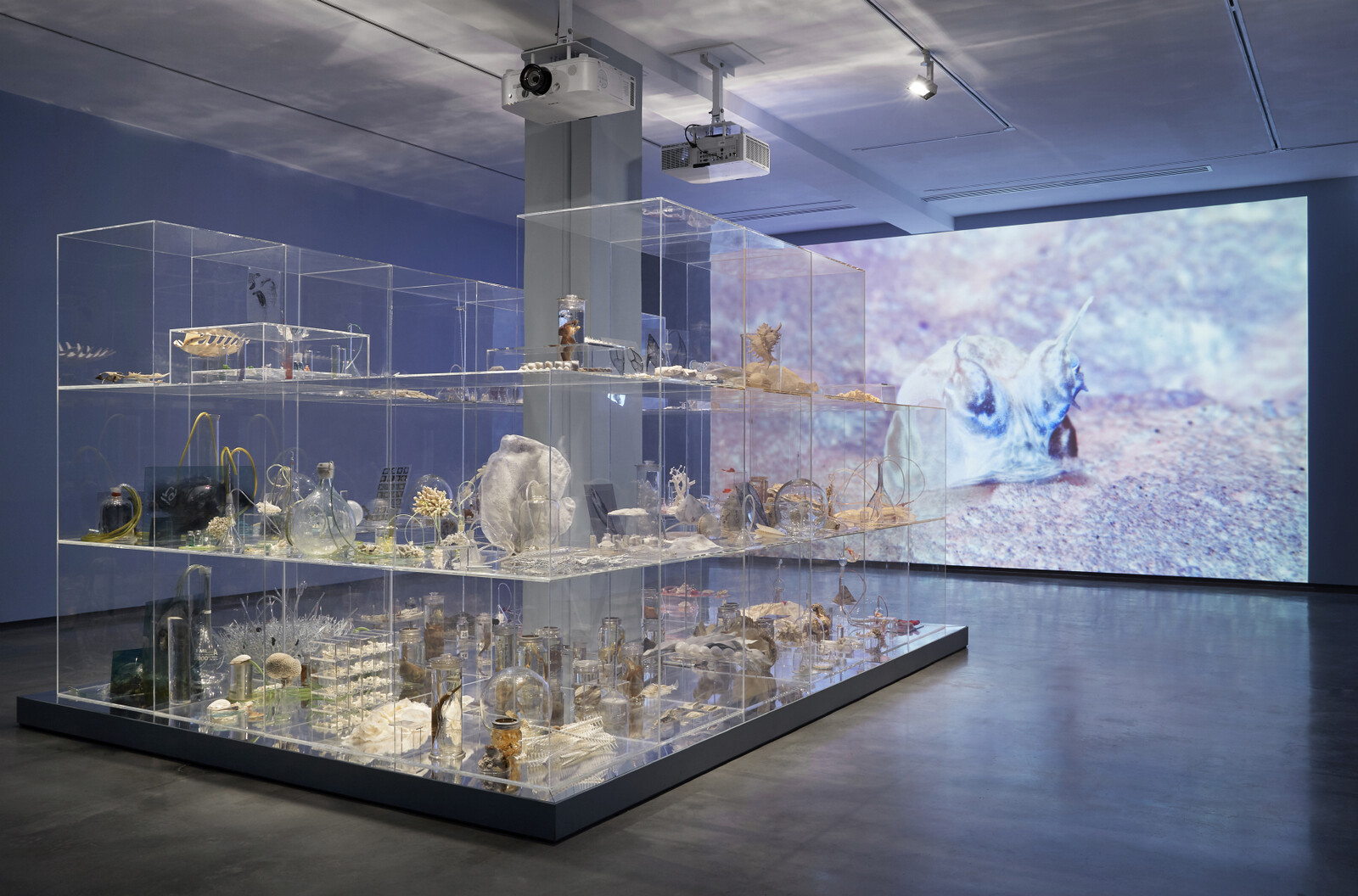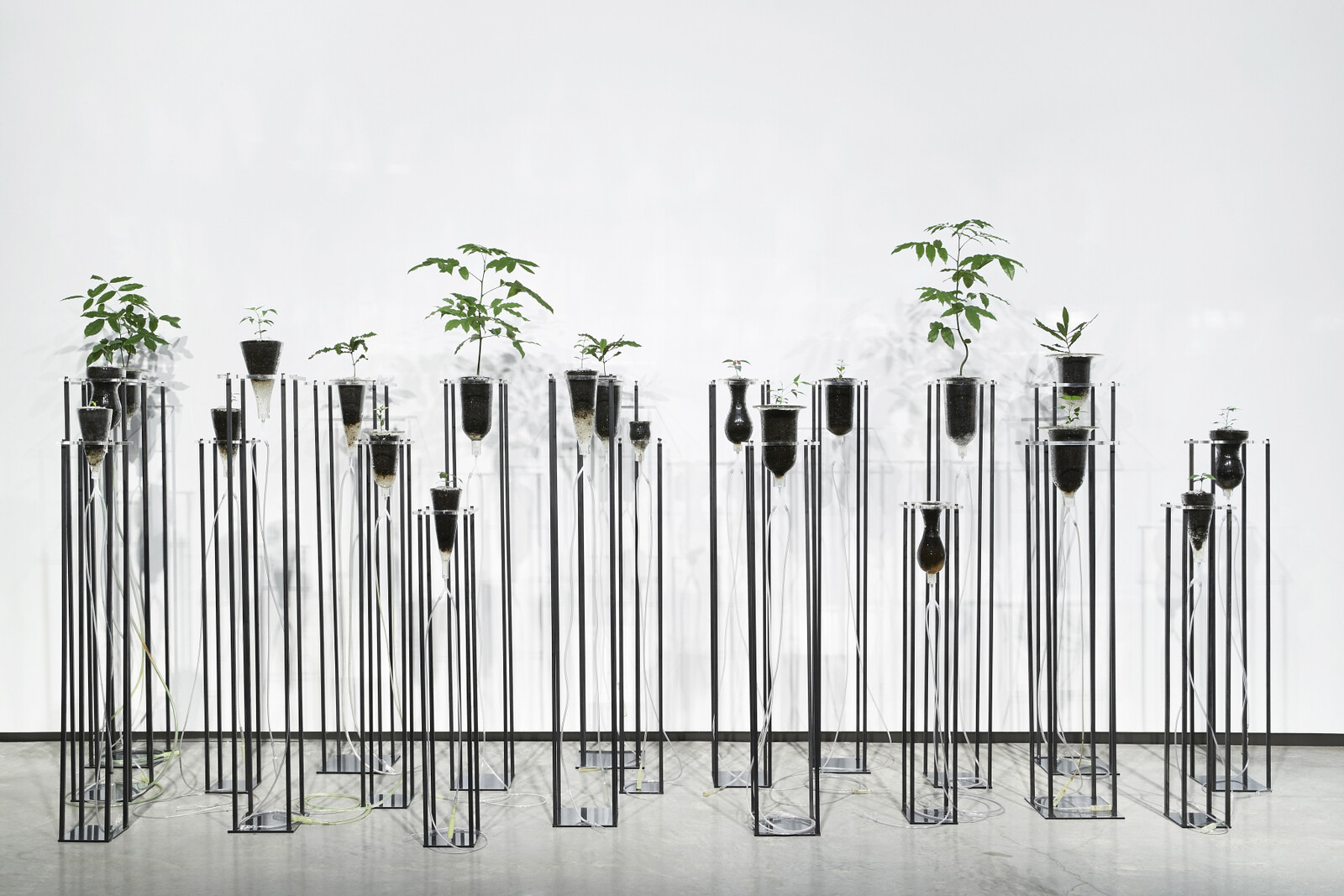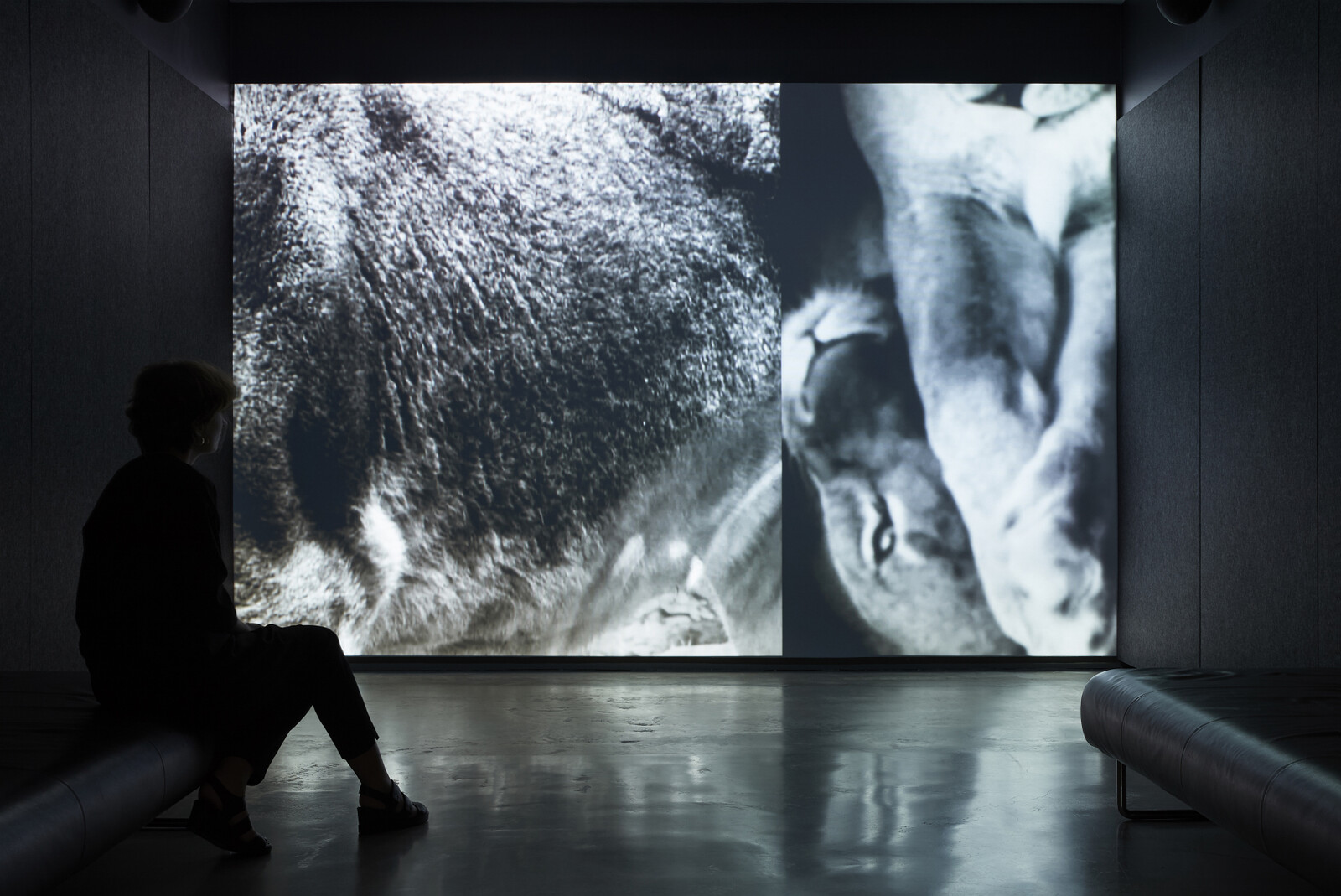“After Nature,” the latest exhibition by Australian artist Janet Laurence, calls on its viewers to become aware of the interconnectedness and interdependence of the natural world at a time when the pernicious impact of humans on nature is evident. To create this recognition, the Sydney-based artist refers in several of her works to the act of breathing and to illness.
Respiration unites almost all living organisms: we are a breathing biosphere. Plants, animals, and humans depend and are co-dependent on the consumption and generation of oxygen and carbon dioxide. The essential rhythmic cycle is a vital and restorative force, and, like nature, it is something that humans take for granted unless signs of sickness are perceived. This dismissal of nature is the concern at the foundation of Laurence’s work.
With ecological devastation and climate crisis looming on the horizon, Laurence engages with plants and animals endangered by habitat deprivation. Cellular Gardens (Where Breathing Begins) (2005) shows endangered plant specimens from the Australian rainforest in glass vials resting on metal stands, all connected to long silicon breathing tubes. By presenting these threatened plants as intubated patients who need assistance to breathe, Laurence aims to generate empathy. However, more than achieving an emotional resonance with the plants’ condition, the piece becomes a reminder of the symbiotic relationship between humans and trees: trees supply oxygen, which humans breathe; humans in turn produce carbon dioxide, which trees respire.
In an adjacent room, Deep Breathing: Resuscitation for the Reef (2015–16/2019) is another hospital-like installation. Here the patients are some species of coelenterates from the Great Barrier Reef. Corals play a crucial role in controlling the levels of carbon dioxide in the ocean and in preventing coastal erosion. Due to increasing water temperatures, these animals have suffered extreme bleaching, which occurs when the colorful algae that live inside the corals are expelled, causing loss of color and leaving them vulnerable to disease. Stored in acrylic cube shelves, surrounded by test tubes, flasks, gauze, and other laboratory equipment, the white coral skeletons have red or green thread delicately woven in their tentacles, signifying a transfusion of color and tubes that intend to keep their respiration. Two video projections that flank the installation show colonies of these marine invertebrates in their splendor, radiating bright colors in their varied textures, and surrounded by multicolored fish that rely on reefs for their survival. Creating a contrast between the vivid video projections and the anemic objects, Laurence successfully draws viewers’ attention to the ecological impact of habitat loss.
Laurence’s most recent work occupies an entire gallery in the exhibition. A testament to the artist’s long-term fascination with woody perennial plants, Theatre of Trees (2018–19) is a large-scale immersive installation comprised of a number of long hanging mesh and silk veils imprinted with images of woodlands and archival scientific images that the artist assembled over decades. Arranged in three concentric circles, mimicking the rings of a tree trunk, the installation is a tree and also a forest, within which visitors can walk and observe the transparency and delicacy of the fabrics that mirror the fragility of these plants. In three adjacent rooms, Laurence displays various historical and botanical books, specimens, and plant extracts exhibited in vitrines, which didactically illustrate the importance of trees not only as crucial elements in the carbon cycle and as producers of oxygen, but also as providers of shelter and medicine.
Laurence’s installations tend to be complex and full of details, but the most compelling work in this show moves away from this elaborate style. Created during a residency at Taronga Zoo Sydney, Vanishing (2009) is a black-and-white single-channel video showing endangered species such as tapirs, snow leopards, silverback gorillas, and giraffes. The camera zooms in on areas of their bodies, so the viewers only see the animals’ fur moving as they breathe. The isolated and solitary images reflect the lives of these captive animals who, deprived of all control, have nothing left to do but breathe. The alluring sound of the animals’ respiration hypnotizes, empathically connecting viewers and animals through the same frail inhaling and exhaling sound.
“After nature” draws viewers’ attention to breathing as a simple but commonly inadvertent sign of life that interconnects humans to other living organisms. By showing these lifeforms in peril, the artist brings light to the sorrowful state of illness created by the anthropocentric disrespect for wildlife. One in which millions of species, including our own, are under the threat of no longer being able to breathe.

_Muséum%20National_2.jpg,1600)
.jpg,1600)

.jpg,1600)
.jpg,1600)
.jpg,1600)

.jpg,1600)
%20.jpg,1600)